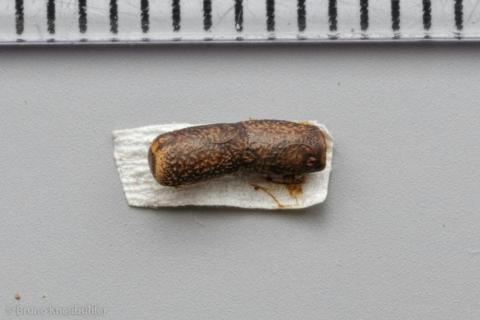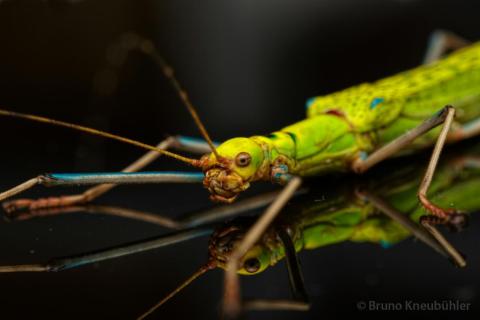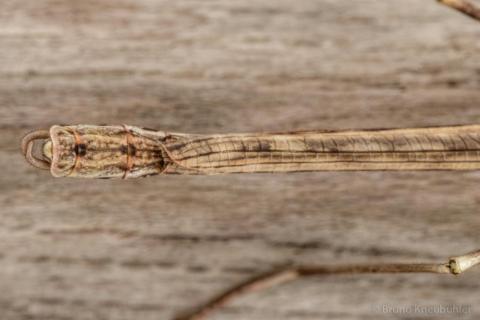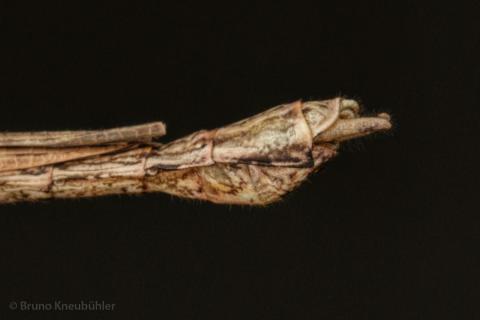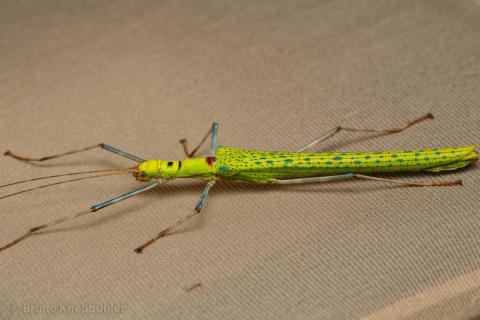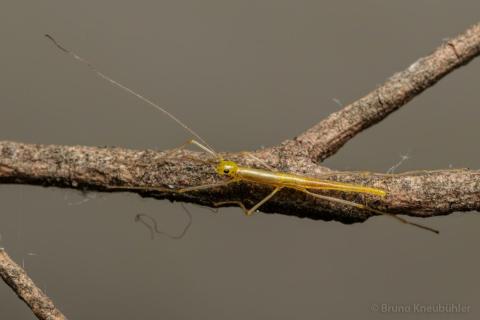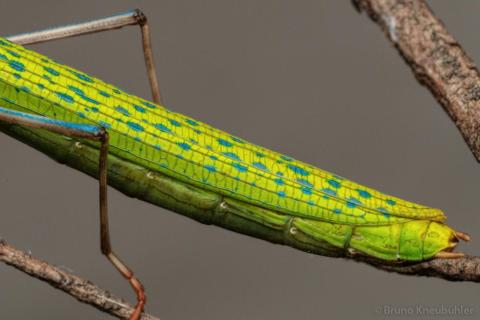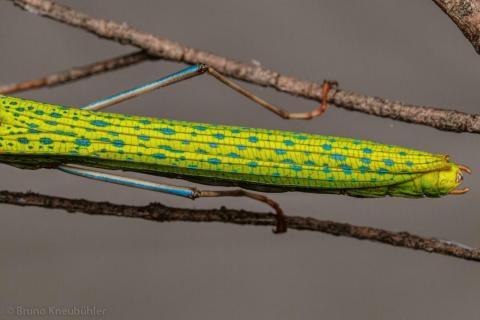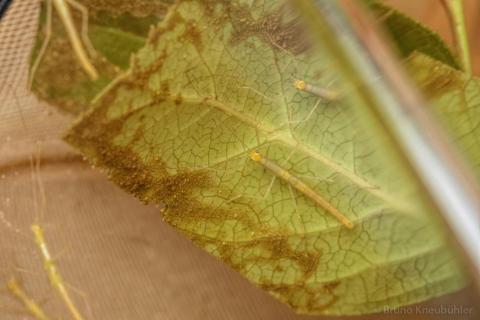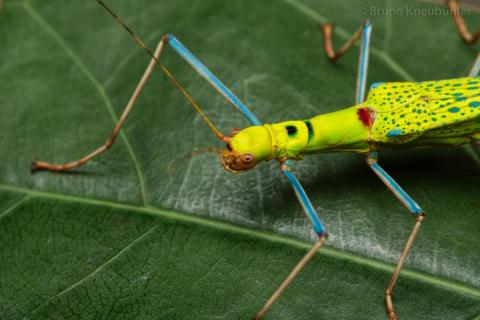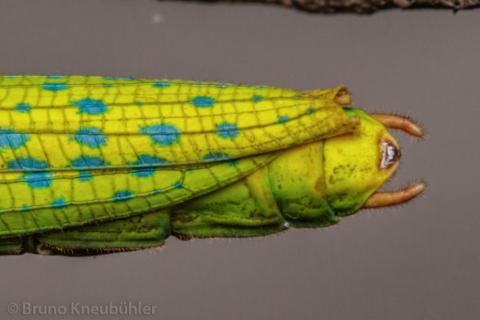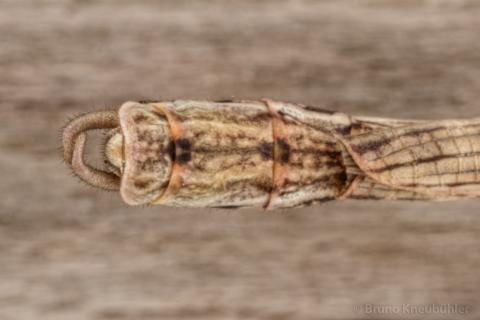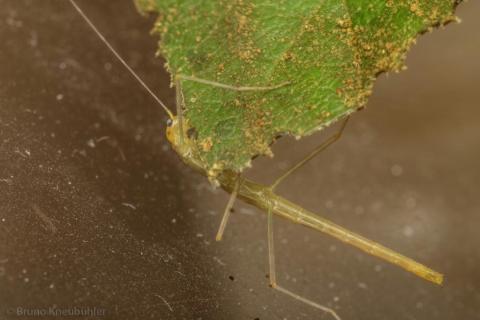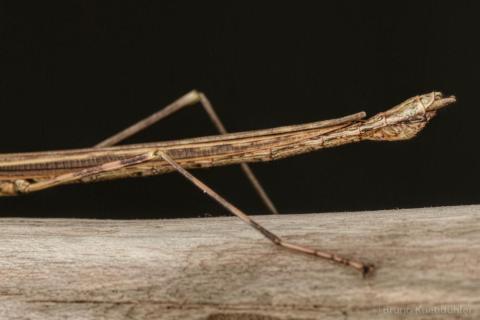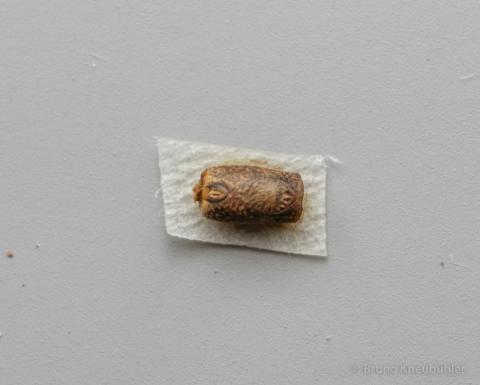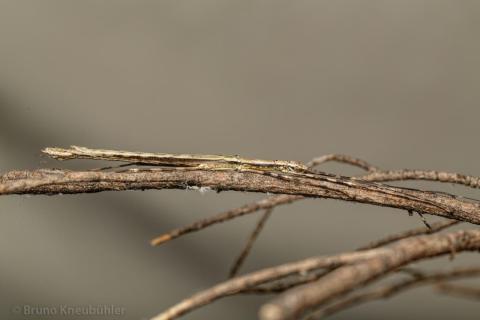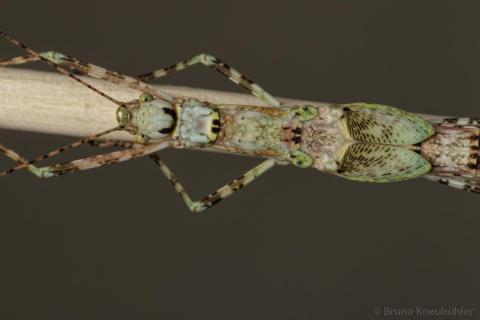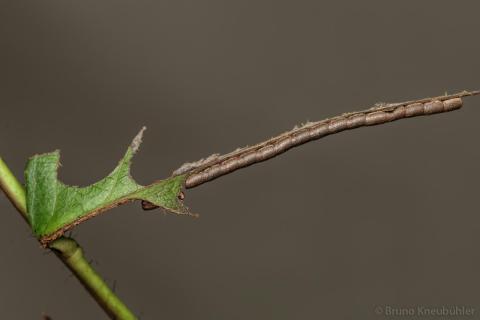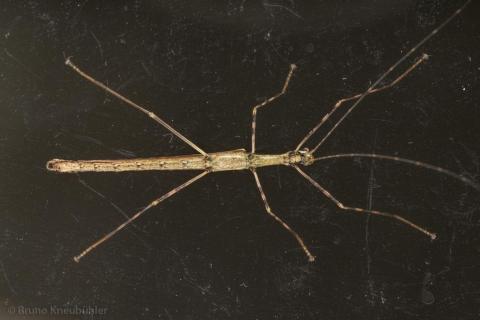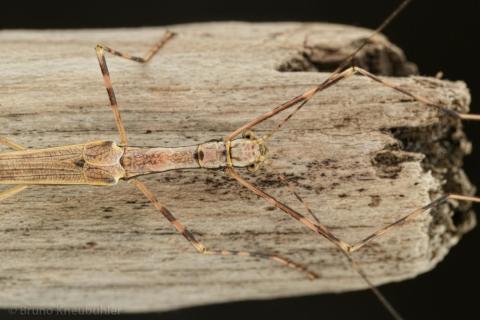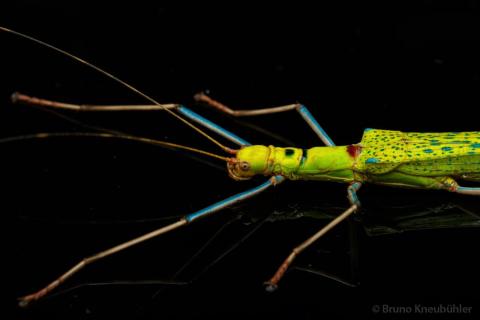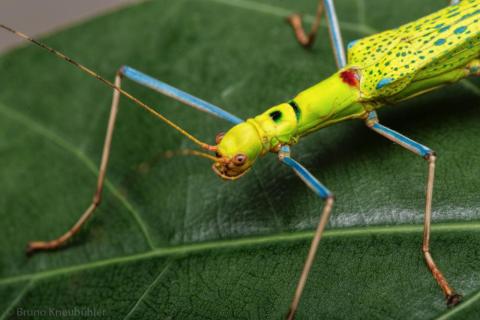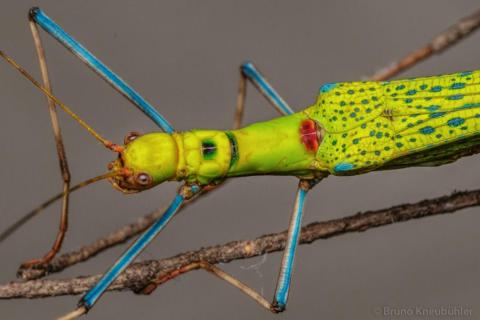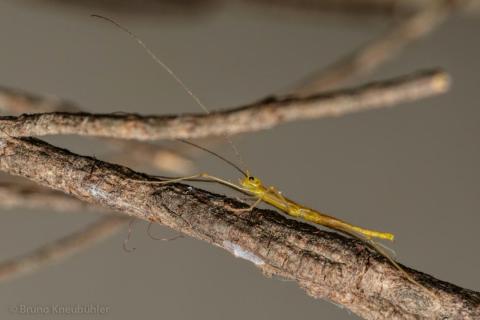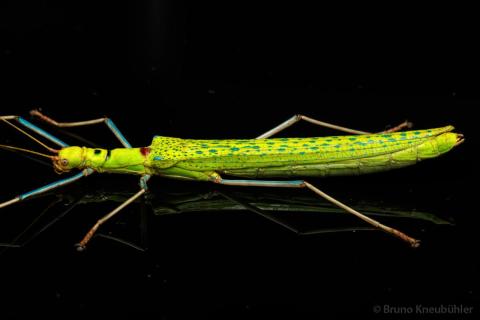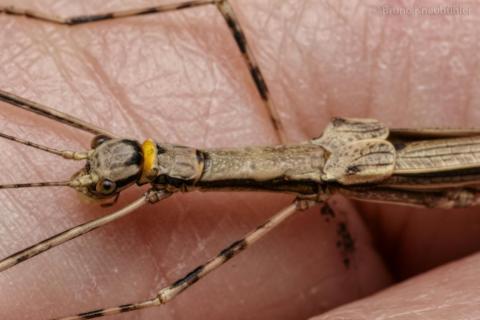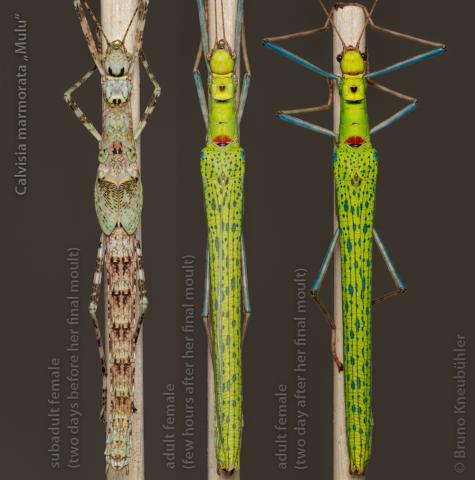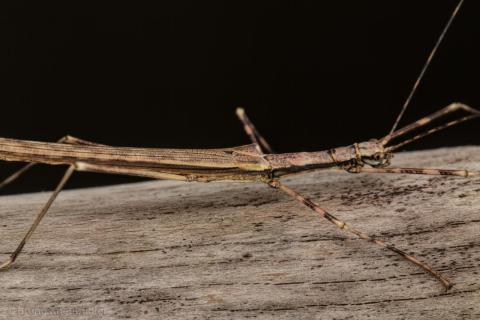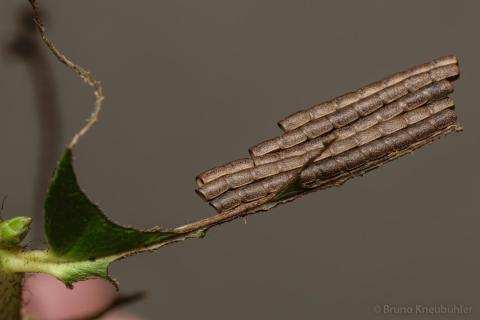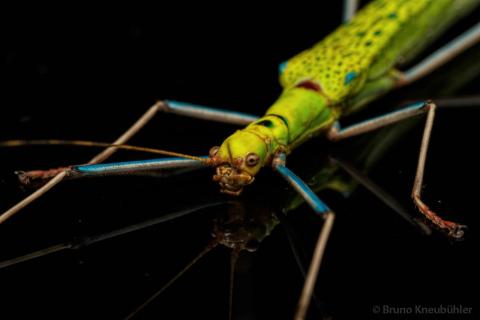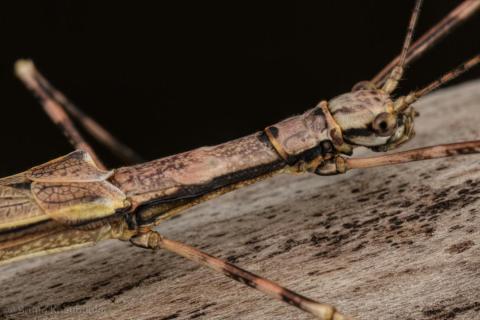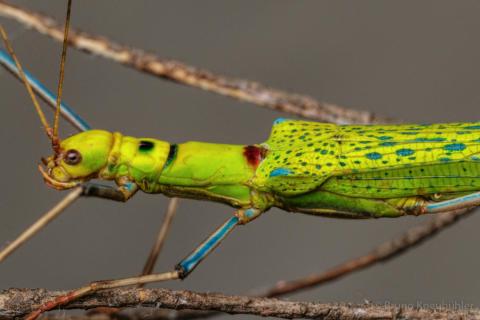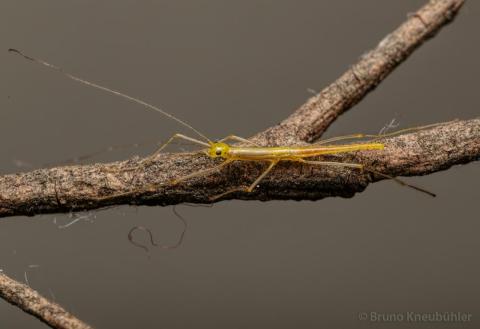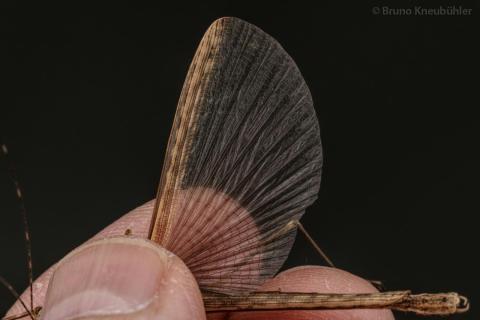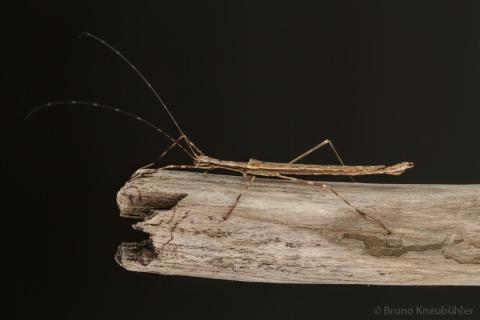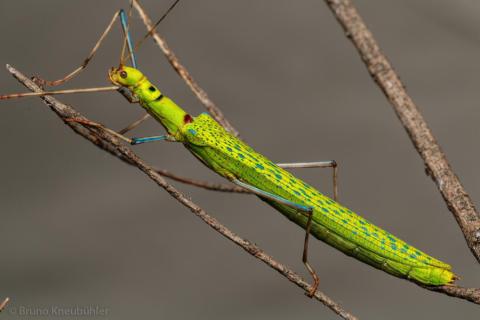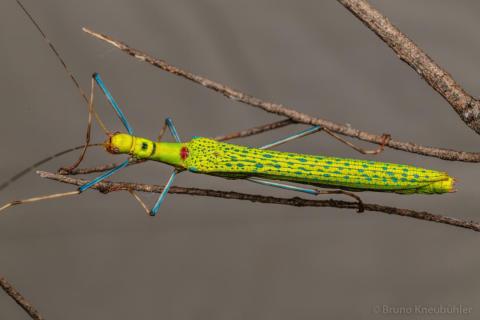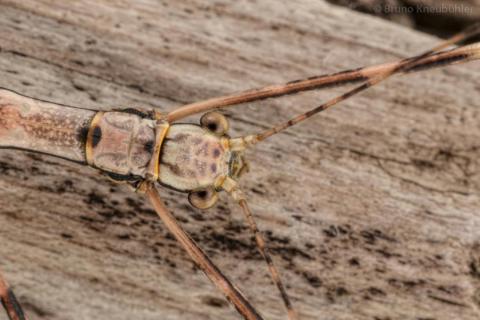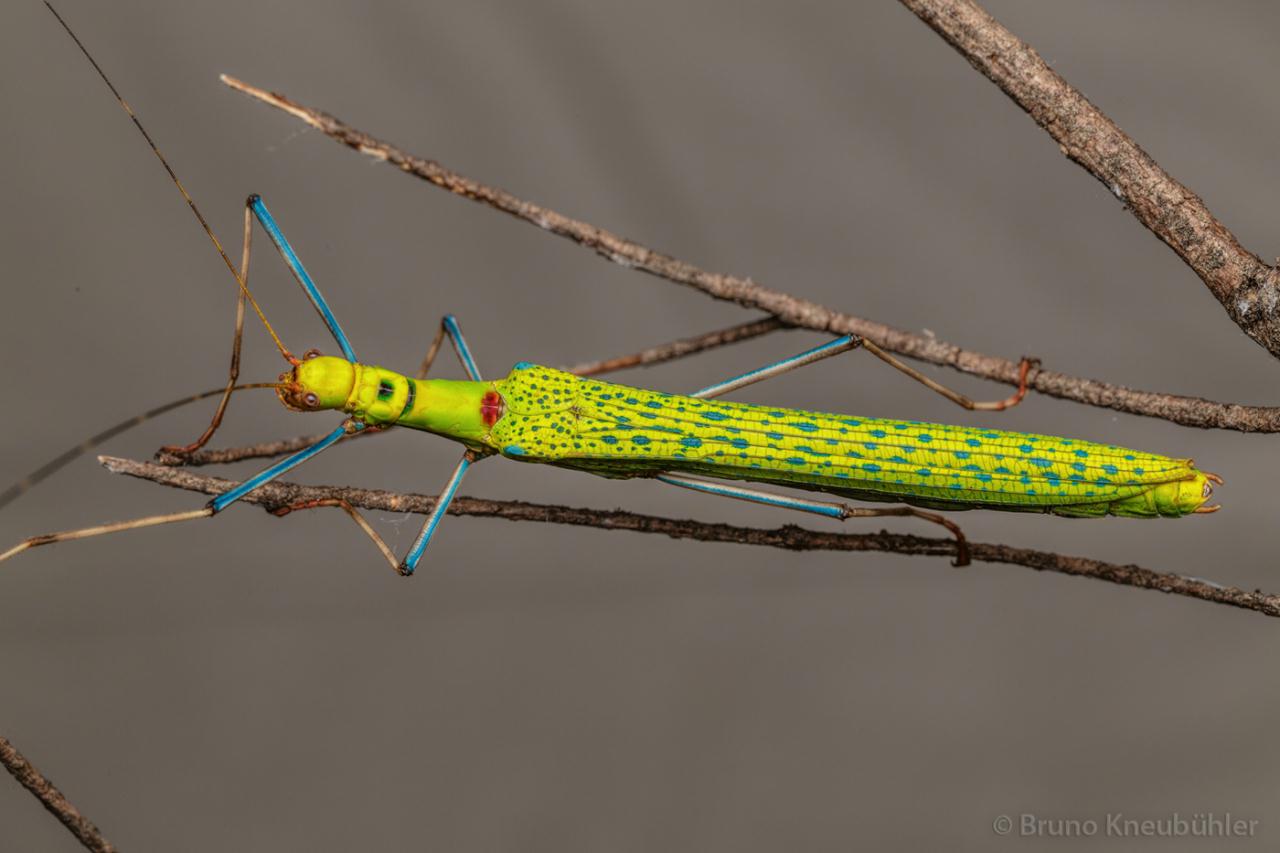
Genus
Species
Stock
CLP
723
Culture status
Unknown
Foodplants
Cherry Laurel (Prunus laurocerasus)
Salal (Gaultheria shallon)
Breeding notes
Calvisia (Viridocalvisia) marmorata "Mulu" CLP 723
(by Bruno Kneubuehler)
General Informations
- provenience: Mulu NP (Sarawak, Borneo)
- ID by Francis Seow-Choen (SG)
- F1 CB culture in 2015 by Bruno Kneubuehler (CH)
- further taxonomical informations ➤ Phasmida Species Files
- this is a pure culture, and serious breeders are asked to avoid mixing this culture with similar populations from a different provenience. When spreading this culture to other breeders, then always use the full name with provenience
- this culture has the number CLP 723 (Online Phasma Culture List)
Females
- very colorful, medium-sized species
- body length 7 cm
- bright yellow, with green, red, blue and black dots
- blue femora
- colorations does not vary much between females
- long wings
Males
- slender, small phasmids
- body length 4.5 cm
- coloration rather monotonous compared to the females
- different shades of brown with a pinkish hue
- well developed, long wings
Nymphs
- freshly hatched nymphs yellow
- on how to distinguish between male and female nymphs
Eggs
- 3 x 1.5 mm
- brown
Food Plants
- cherry laurel (Prunus laurocerasus)
well accepted by nymphs and adults (especially young leaves)
although they grow up on this food plant very well, it is not yet clear whether or not this food plant is good enough to keep a culture healthy over several generation - Salal (Gaultheria shallon) with a cherry laurel coating
well accepted by nymphs and adults (especially young leaves)
more on the Coating method - Salal (Gaultheria shallon)
older nymphs and adults adapt to Salal quite easily, one can also offer apple slices to support the transition period - Prunus serotina
well accepted, but only summer-green (info by Henri Zomer, NL)
Breeding, Behaviour
- apart from the food plant situation, easy to breed
- active mainly during the night
- they usually feign death when touched, adults sometimes try to escape flying
- a defensive spray has not been observed
- eggs are glued in rows to different objects (twigs, containers, cage)
- one clutch every 2 - 3 weeks, up to 35 eggs per clutch
- if eggs have to be removed, then spray them with water. After 10 minutes they can carefully be removed
- GET method for a natural incubation of glued eggs
- incubation about 5 weeks at 20 - 24 °C
- eggs of this species are not prone to get mouldy
- nymphs hatch during daytime (around noon)
- a humidity of about 65 - 75 % seems to be good enough for nymphs and adults
- one can spray them regularly with chlorine-free water, but allow the water to dry up before spraying again
- males will be adult after 2 months (at 20 - 24°C), females after 3 months
Basics of phasmids breeding
- keep only one species per cage, overpopulation is one of the main reasons for breeding failures
- keep nymphs seperate from the adults, mainly to protect them during the crucial moulting phases
- choose the cage big enough. When in doubt, too big is (usually) better than too small
- a ventilator often supports good breeding results, as it seems to increase activity and feeding
- provide enough light, but avoid direct sunlight (overheating)
- try to keep day time temperatures below 25°C
- a nocturnal fall of temperature is natural, and thus advantageous
- do not spray too much, phasmids are no fish ! The water should dry up before you spray again
- minimize disturbances (loud music, commotions, light at or during the night, opening up cages in the morning [often a moulting phase] ect.)
Useful informations
➤detailed infos on how to breed phasmids
www.phasmatodea.com/web/guest/199
➤
infos on newly cultured phasmid species
https://www.facebook.com/phasmatodea
➤
how to recognize the difference between male / female nymphs
www.phasmatodea.com/web/guest/tips-and-tricks
➤
eggs for breeding
http://www.phasmatodea.com/web/guest/222
